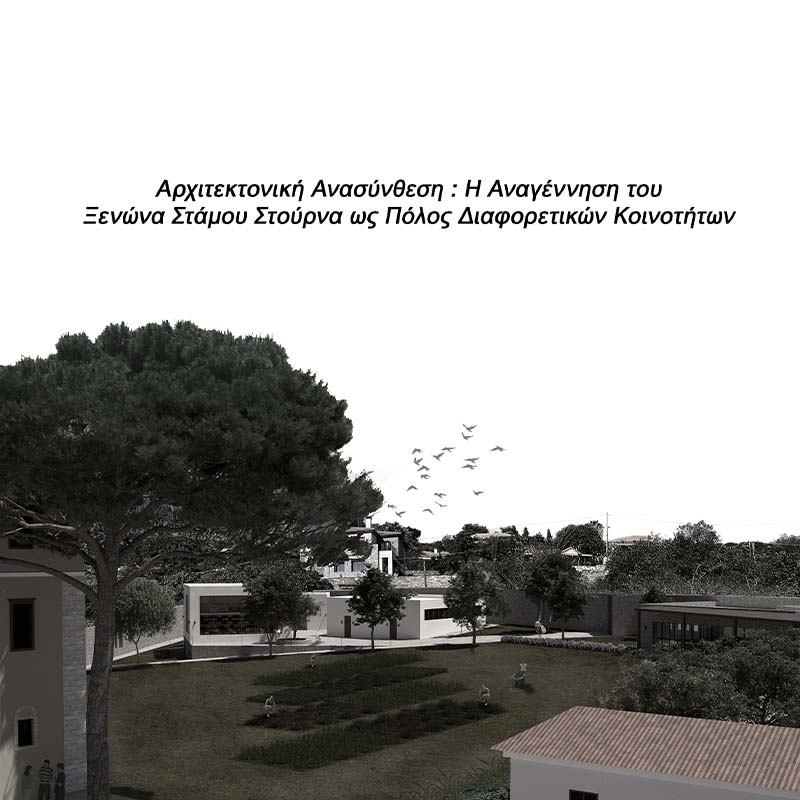











This thesis examines the regeneration of the historical Stamos Stournas Guest- house in Alli Meria Volos, also known as the Hatziargyris mansion, which is lo- cated in Alli Meria, Volos. The aim of the study is to transform the building and its immediate surroundings into a modern, active pole of cultural and creative activities.
The analysis and utilization proposal draws from the following analyses: a) the history of the building and its maintenance needs, b) the management of the Guesthouse by the Association of Architects of Greece to which the building was donated in 1963, and c) the residential and social characteristics of Alli Me- ria, where the Guesthouse is located, as well as the landscape characteristics of the wider region of Pelion. By understanding the historical, social, residential and natural environment in which the Guesthouse is situated, the goal is both to activate it and to connect it with the local community of Alli Meria.
The strategic approach involves integrating the Guesthouse as an active com- ponent of the wider community, focusing on preserving and enhancing its his- torical character while simultaneously proposing the creation of new uses to boost its functionality. Specifically, the construction of new building facilities is planned to accommodate a wide range of activities such as educational work- shops, lectures, cultural events, conferences, and exhibitions, as well as spaces for study and work.
The new uses will promote continuous interaction among diverse communities, encouraging collaboration and mutual learning. They will incorporate modern, sustainable practices that highlight social and environmental awareness, while simultaneously fostering creative expression and professional development.
These proposals will strengthen the local community by transforming the Guest- house into a dynamic and modern center that meets contemporary societal needs.
Supervisor: Phokaides Petros
Reference Number: 1094
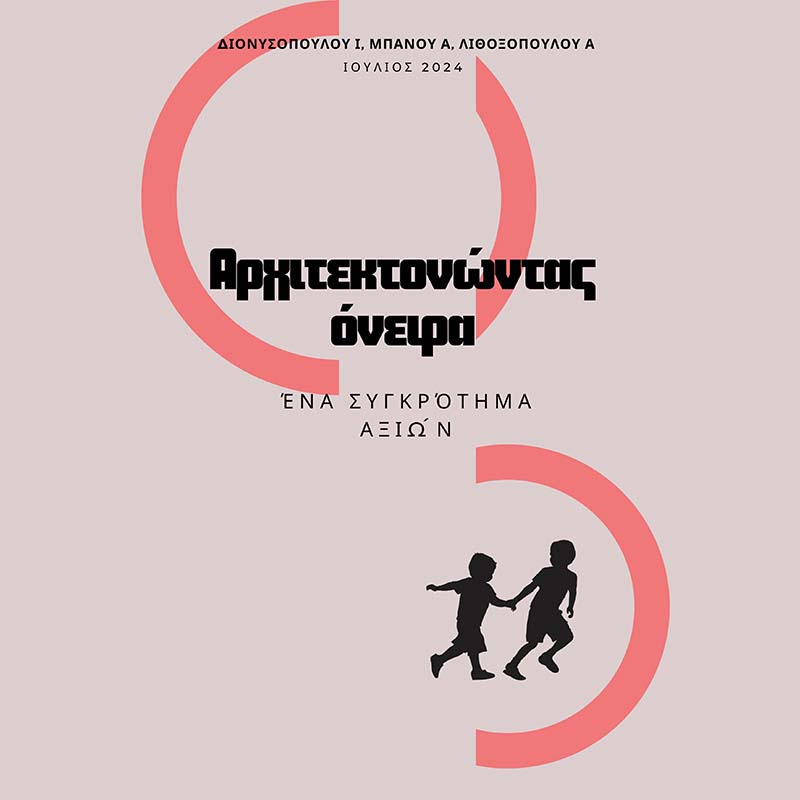

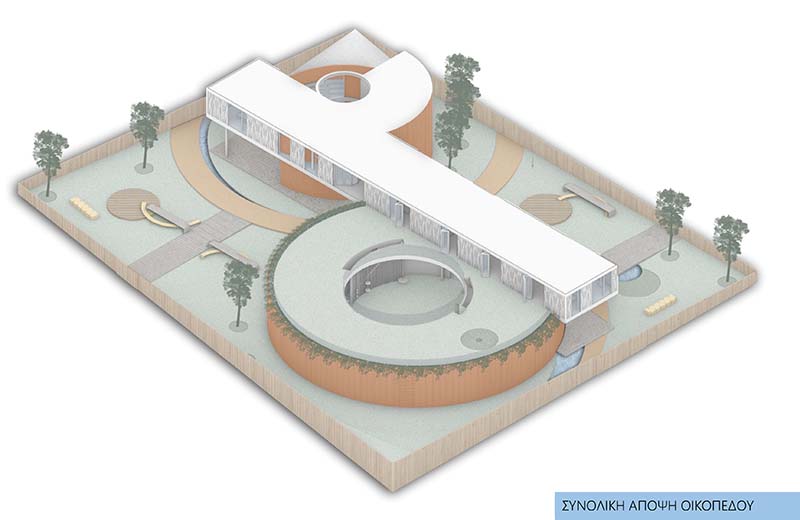

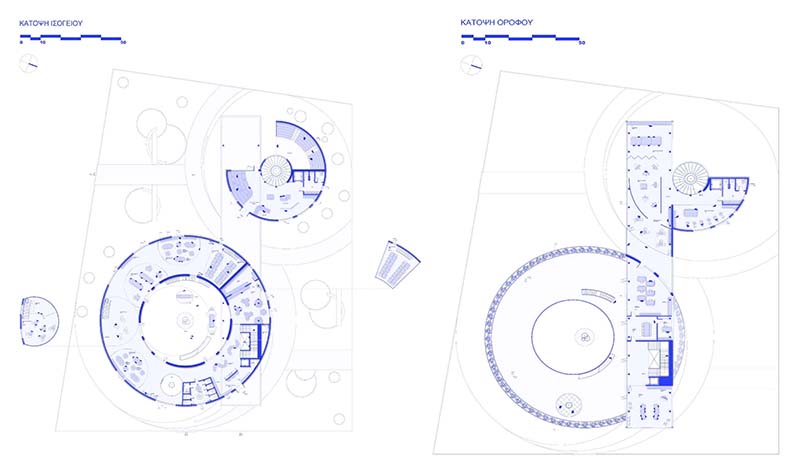

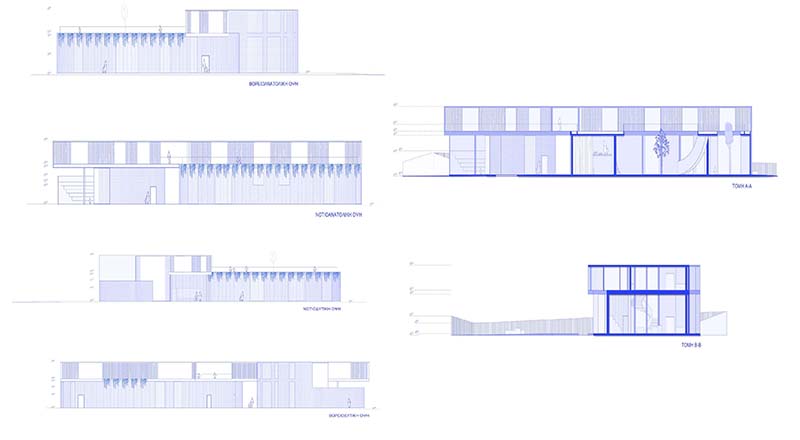

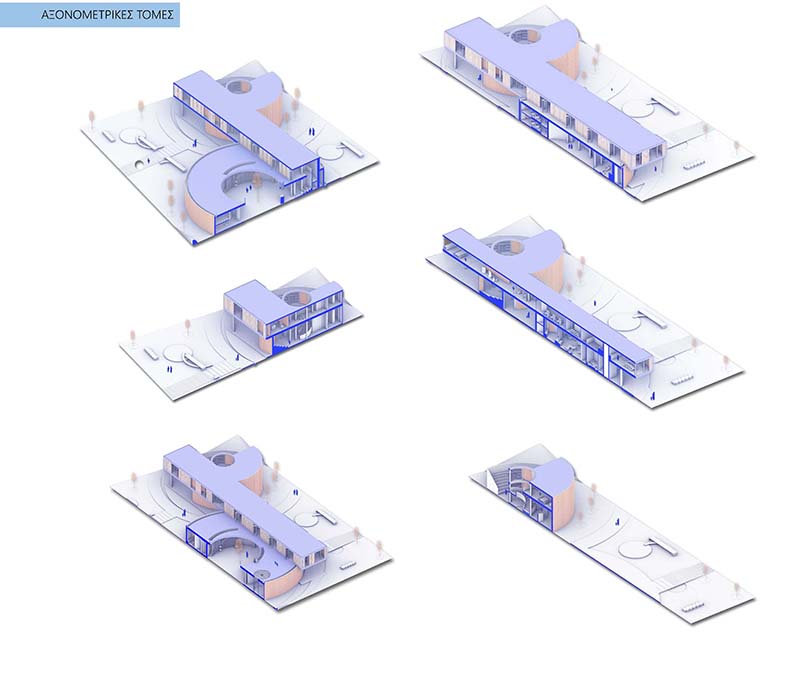

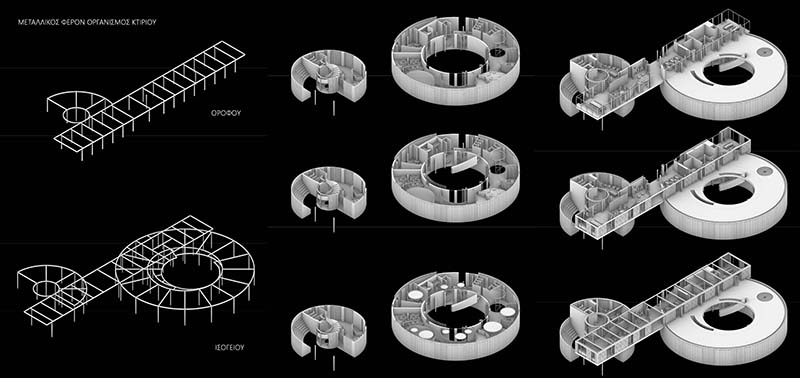

Architecture mirrors the society it represents and can lay bare the problems of the time. The issues of modern society are increasing. In every conversation between friends, family, or media, they all conclude: "it's all about education." From birth to adulthood, the main education sources are family and school. Therefore, the main means of cultivating values is school. Therefore, the main means of cultivating values is school. The child's first contact with school is kindergarten. It is one of the most important years in children's lives, during which books and exams do not bombard them, they are freer to discover, experiment, and through play learn the rights and values that a person has. With contemporary problems at the core of inspiration, our diploma thesis aims to create a kindergarten of values, where architecture will actively and effectively contribute to education. Having kindergarten as our main study element, we chose a plot in Volos of 4 acres, in which we designed a multipurpose space. It is a kindergarten and an arts center that will operate in the afternoon hours for children of all ages.
Supervisor: Manolidis Kostas
Reference Number: 1066
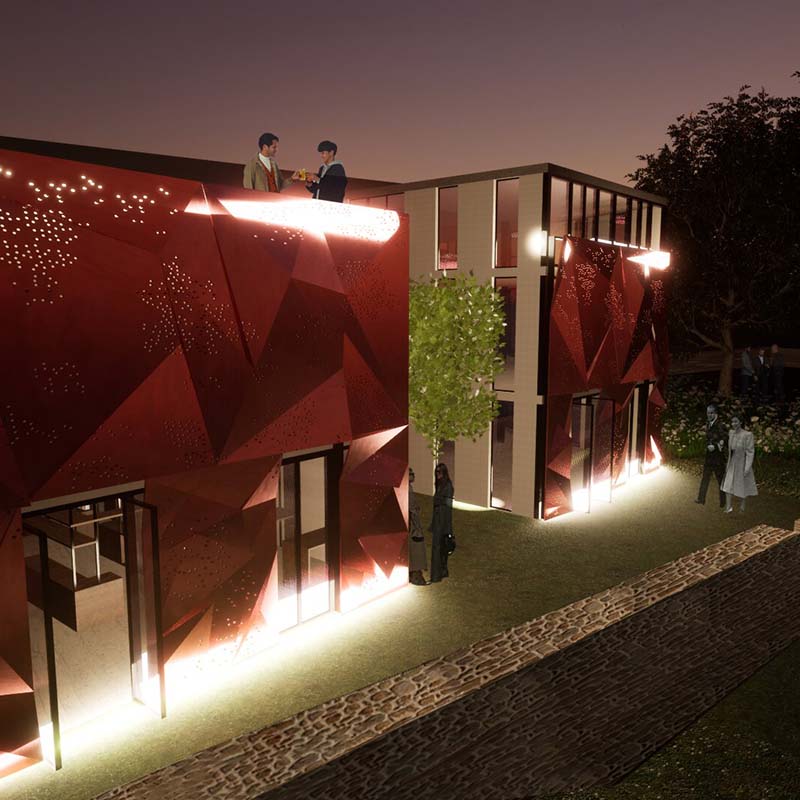

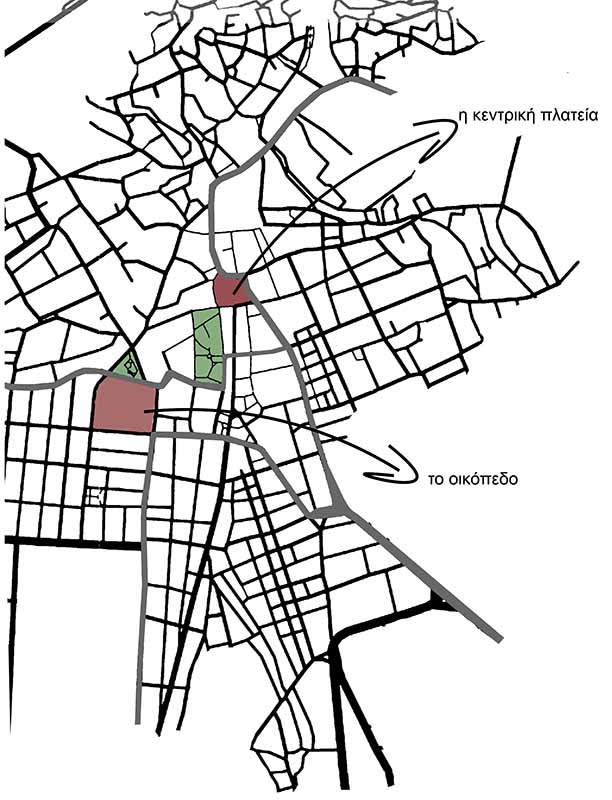

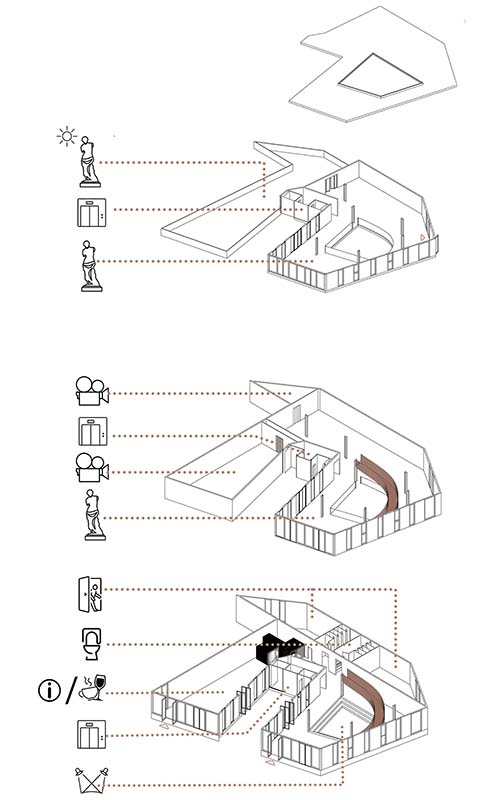



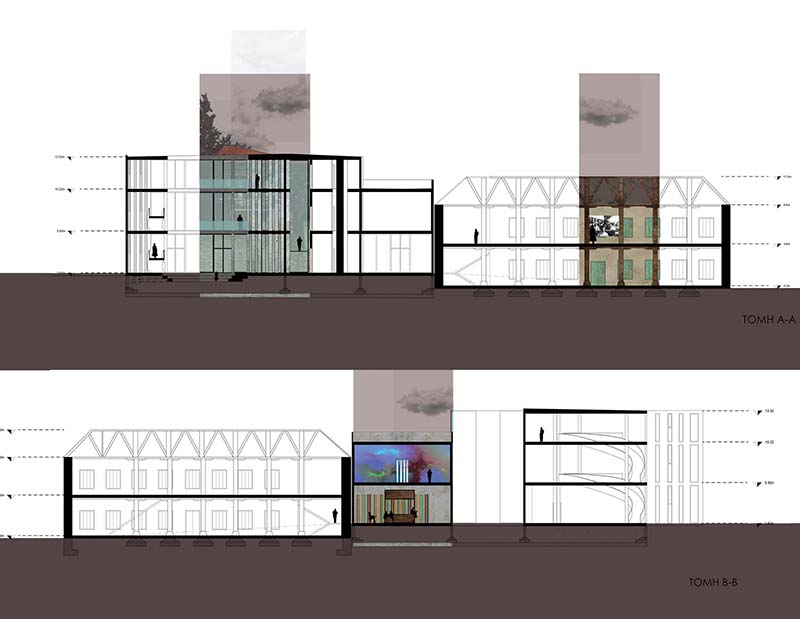

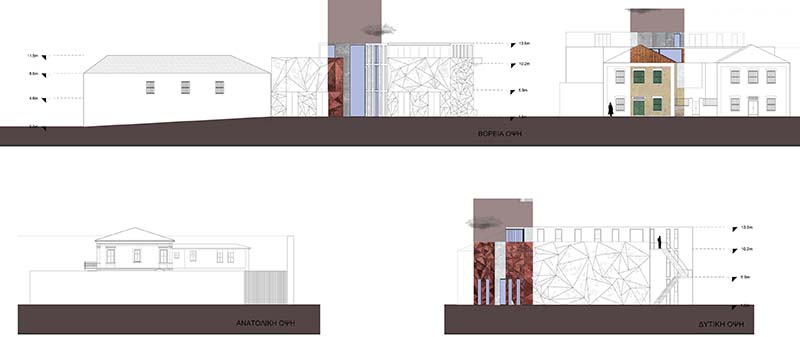

Xanthi became famous in the 19th century where it flourished economically due to the production of tobacco. It was called Little Paris because of the wealth of that time. A Paris that has preserved its building heritage but keeps it unexploited. This naturally leads to the neglect of the buildings - most of which are tobacco warehouses - with the latest event being the burning of the tobacco warehouse on Anaxarchou Street in 2022. The use of the tobacco warehouse premises is an urgent issue to this day as half of them have been left to rot.
The present project focuses on the tobacco warehouse Π on Andreou Demetriou Street, in the city centre, in contrast to the other tobacco warehouses located on the outskirts of the city. Xanthi has 3 museums which meet the traditional museum standards that want the user to be a viewer rather than a participant. This thesis proposes the expansion of the old tobacco warehouse in the form of a modern museum. The new building will be able to house exhibitions, performances, presentations, audiovisual installations and offer a flexible space to all participants. The ground floor can also be used as a gathering space in the evening while exhibitions will be hosted on the covered and outdoor floors. The association with the old tobacco warehouse is done from the inside letting the participant jump from era to era.
The tobacco warehouse has retained the industrial architecture of the era while the new building meets the modern industrial architecture.
The aim of the project is not only to create an attraction in the city centre, but also to enhance an existing preserved site with an extension. The site is designated as a green lung which is currently used as a car park. I want the radical and somewhat immature proposal of this thesis to also serve as food for thought. What is it that we preserve and why preserve it if we cannot enhance it with respect and adaptation to it. The building additions do not obscure but on the other hand support the cultural wealth and work together as a palimpsest.
Supervisor: Remy Nicolas
Reference Number: 1053
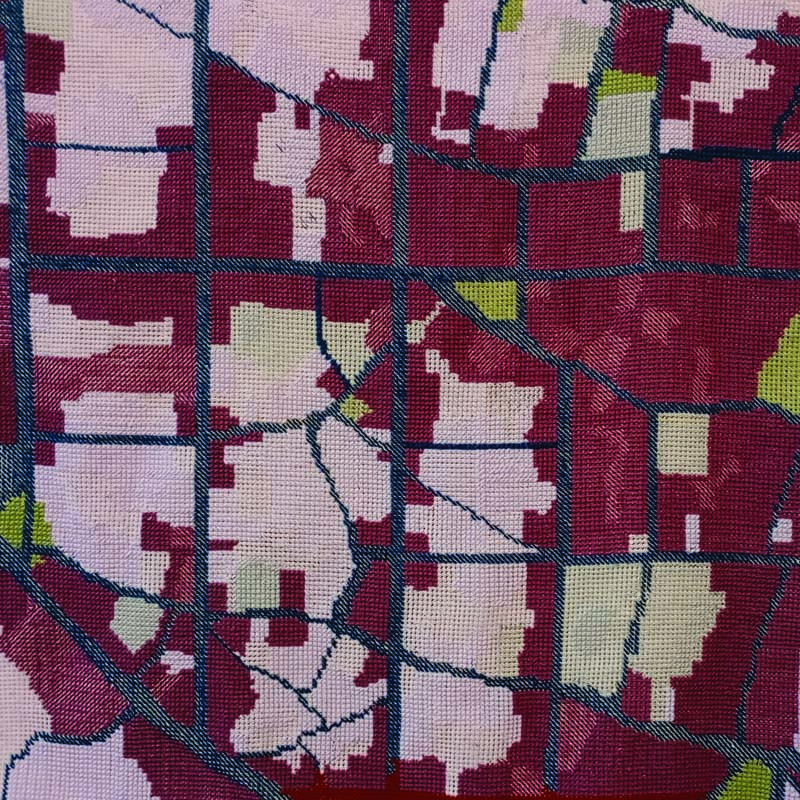

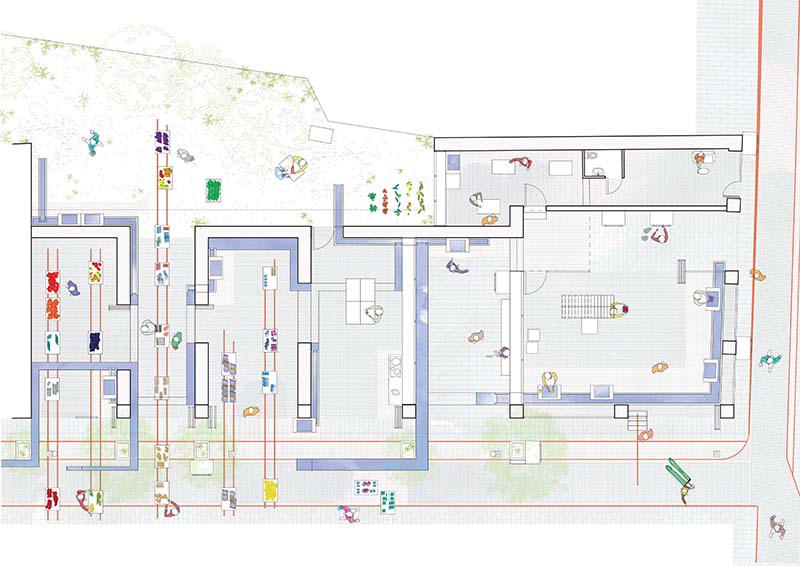

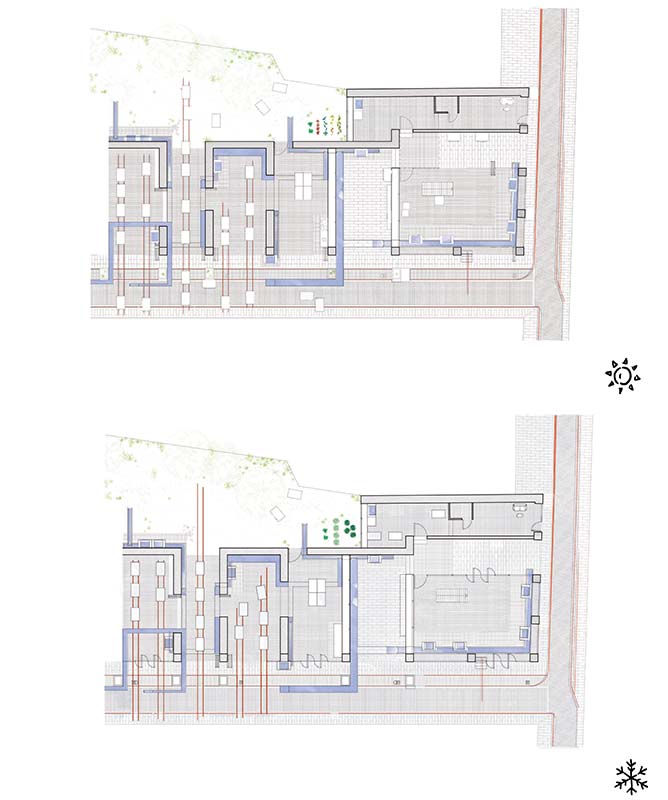

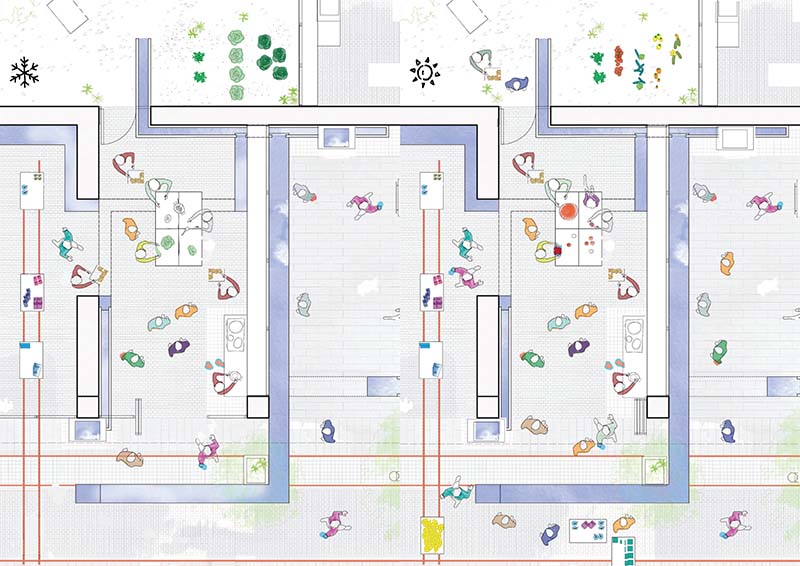

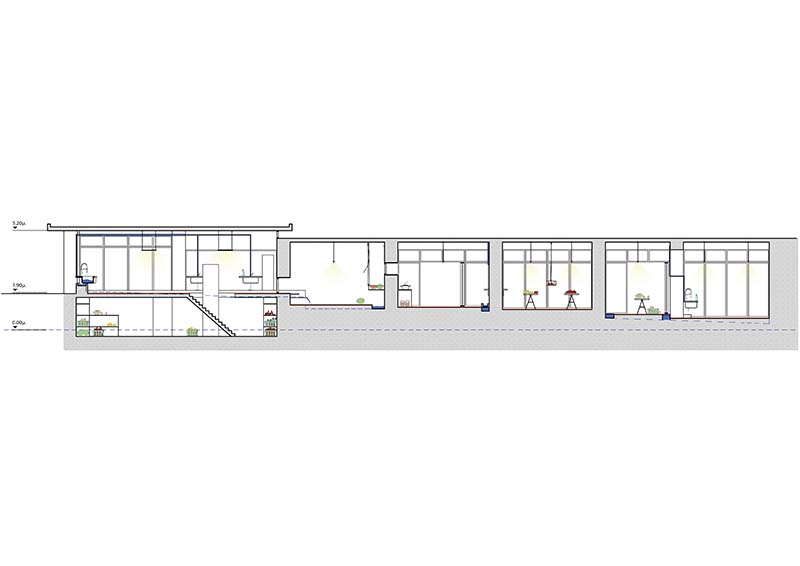

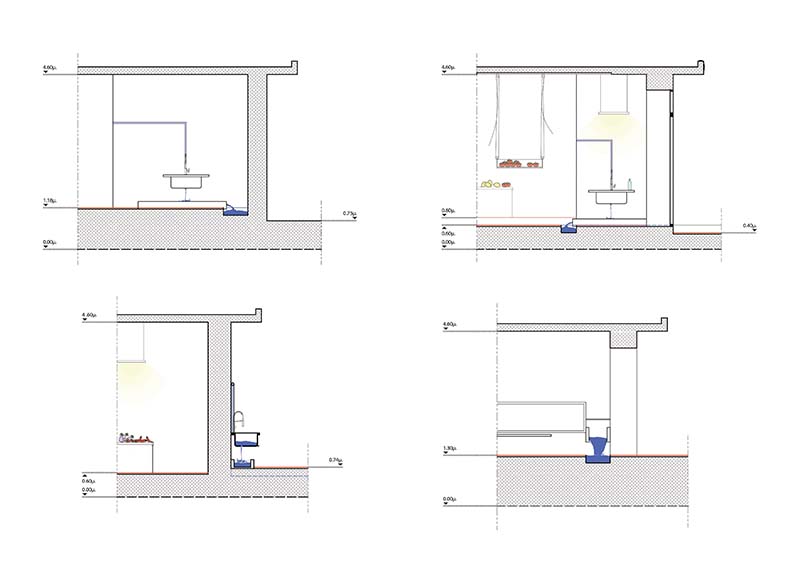

In search of caregiving habits within a society, one is confronted with a plethora of problems arising from the neglect of caregiving practices and the people who provide them. For this project, the focus was on the issue of food and its management within the community's daily life.
Observing both the functioning of a community and how a city procures the necessities for its inhabitants' livelihood, a community grocery store is planned. This grocery store, housed in a municipality legacy of the city of Aigio, aims not only to care for needy food but also to create a common meeting space for residents, a space that can care for the entire community without distinctions. Thus, through its operation and the movements required for its provision, this endeavor becomes a visual and auditory stimulus that invites citizens to participate in a daily caregiving ceremony.
A particular point of this work is the representation of the topographic layout of the research and study area using the technique of embroidery. This design approach emerged from a need to find means of expression that better correspond to the unique points of the research, to those moments that deserve to remain silent but not forgotten. Finally, the process of producing this embroidery, in which a plethora of friends of the writer participated, constituted an important condition of care towards the design and the work as a whole.
Supervisor: Gavrilou Evelyn
Reference Number: 1046
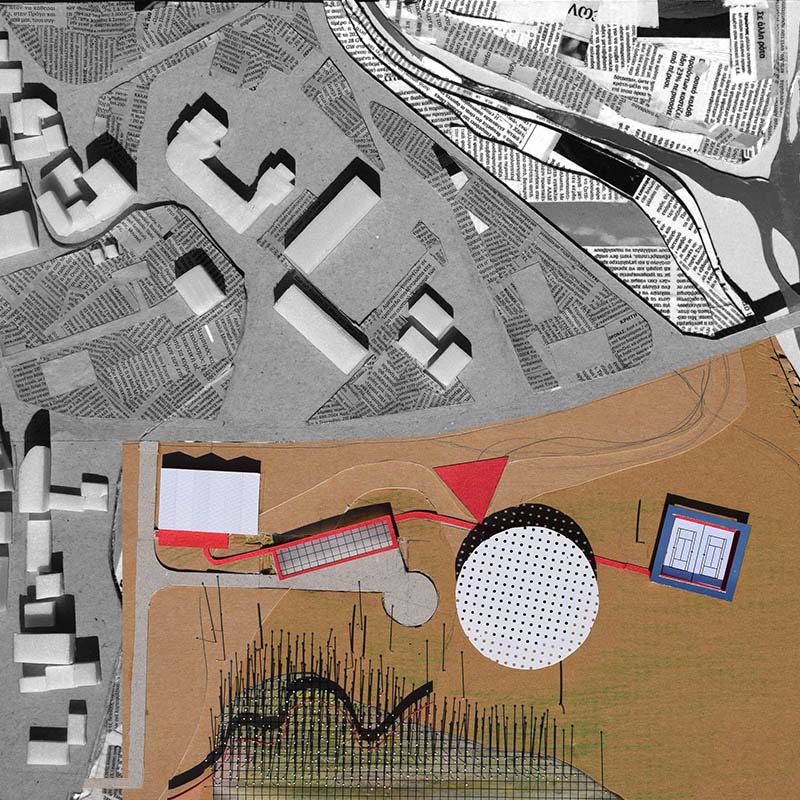

This work describes the process towards formulating a proposal for the connection, re-programming, completion and activation of two unfinished public buildings located at the Eastern Entrance of Aridaia: the covered market and the swimming pool complex.
Aridaia is a small town in the regional unit of Pella and serves as the administrative center and geographical hub of the Municipality of Almopia. The Municipality extents over a very large area and has a distinctive profile due to its geomorphology; It consists of a plain surrounded by mountains forming an almost closed basin. However, the lack and the abandonment of infra-structures that could potentially offer choices related to leisure activities make the feeling of isolation and nullification in the region even more intense.
Experiential insights, on-site research, context analysis, archival investigations, discussions with locals, and information gleaned from tracking local and national mediaaffairs converge in certain instances with references from architectural history. Additionally, an assessment of the area’s strengths and weaknesses is conducted, aiming to enhance the former and address the latter. These elements inform architectural experiments involving models and sketches related to both buildings and the broader area.
Through evaluating the research results and trial efforts, a strategic plan ultimately emerges for activating these structures and connecting them to new or existing networks of the city and its periphery. Particular emphasis is given to the relocation of the bus station which acts as an important factor for the activation of the area.
This strategy aims to transform the area into a hub that welcomes people from all of Almopia, especially the students of the neighboring to the studied buildings schools, granting them access to cultural and sports-related experiences that are currently lacking in the region. Simultaneously, this activity will extend to the municipality’s periphery through the projected networks, activating additional public spaces and thus contributing to the resilience and openness of the region.
Supervisor: Mitroulias Giorgos
Reference Number: 1060
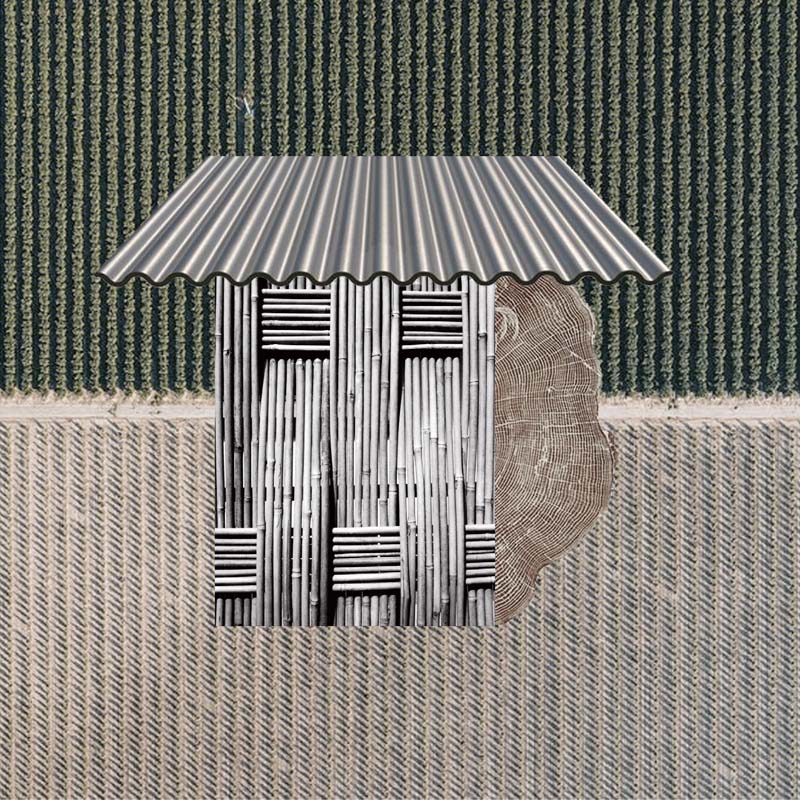

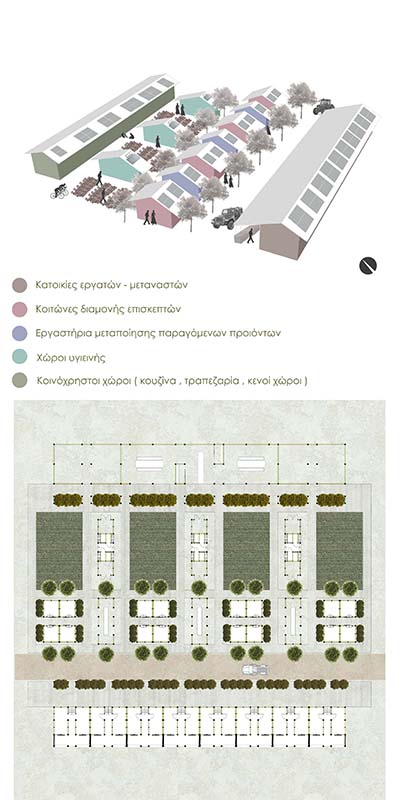

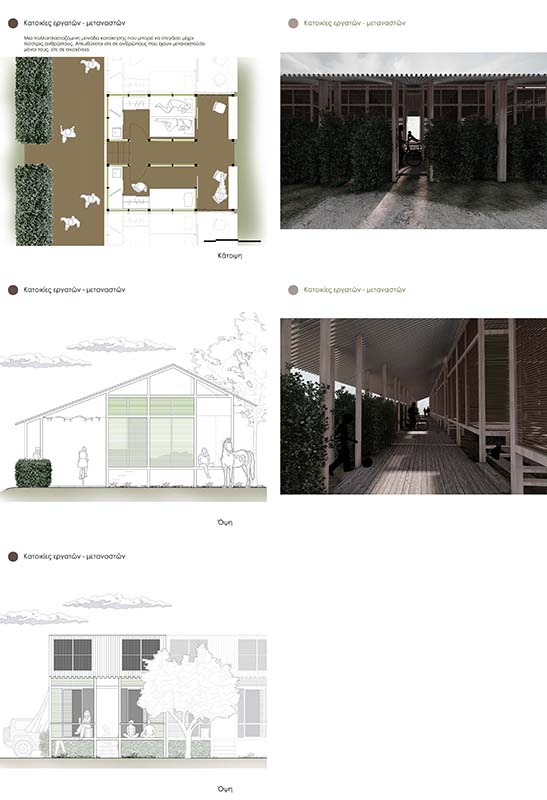

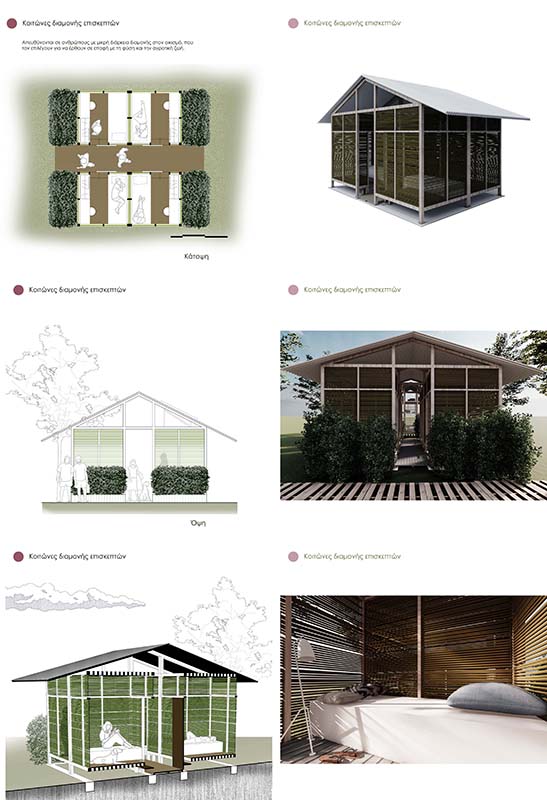

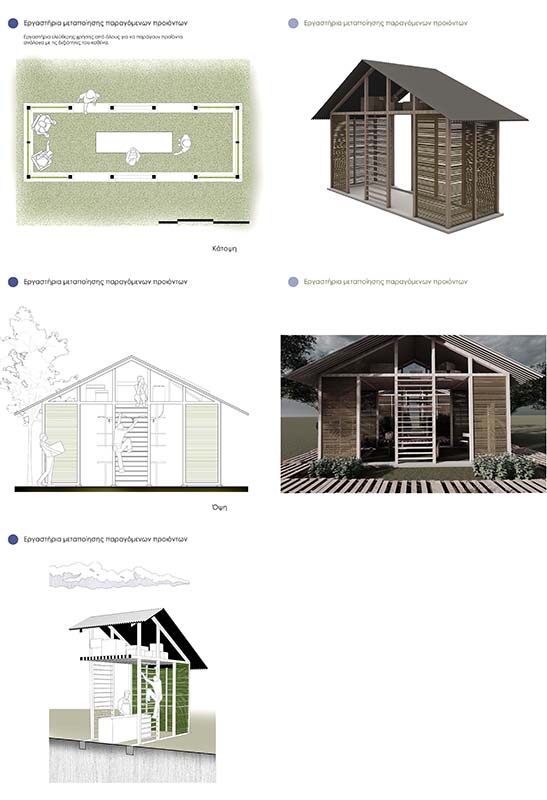

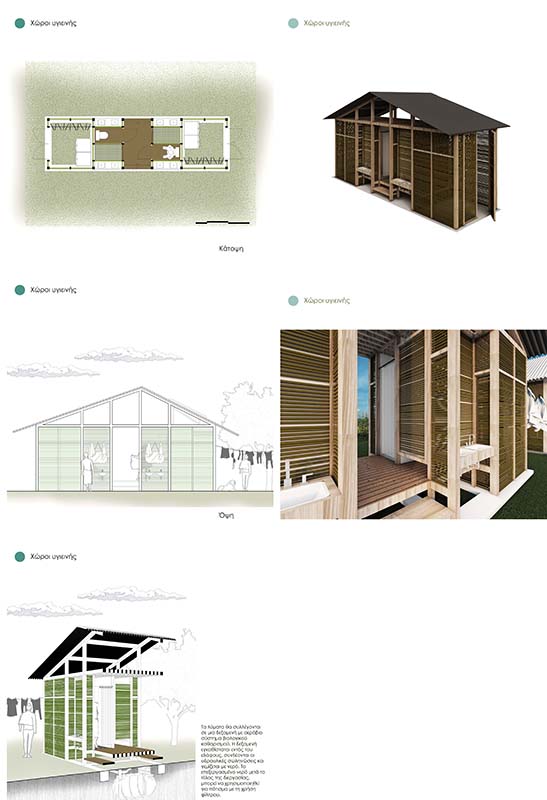

People from third world countries migrate to our country (Greece) for work and for a better tomorrow for them and their families. One industry that is in need of labour in our country is agriculture and animal husbandry. Η The involvement in this kind of work can offer these people WORK, SHELTER, FOOD, SOCIALIZATION...
The aim is to create a settlement that can accommodate a large number of people. a settlement that can accommodate a large number of migrants engaged in agriculture and animal husbandry. With an emphasis on on minimal habitation, remote from the urban fabric, but not isolated and respecting the natural environment. The constructions that will be created will be simple, easy and economical, so that each and every person will be families will be able to build them themselves, without having to spend much money.
Supervisor: Stylidis Iordanis
Reference Number: 1058
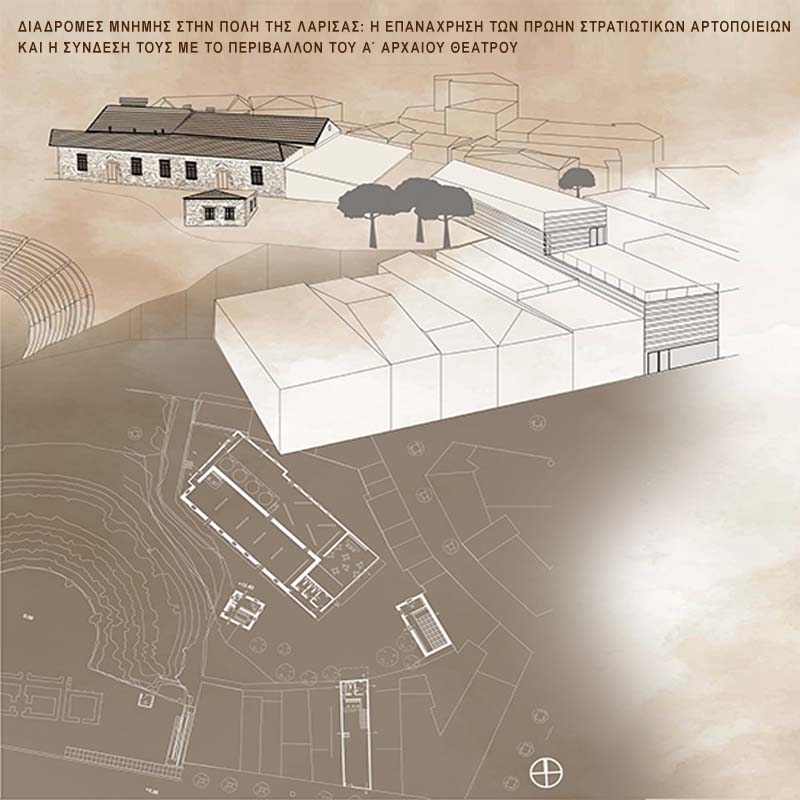

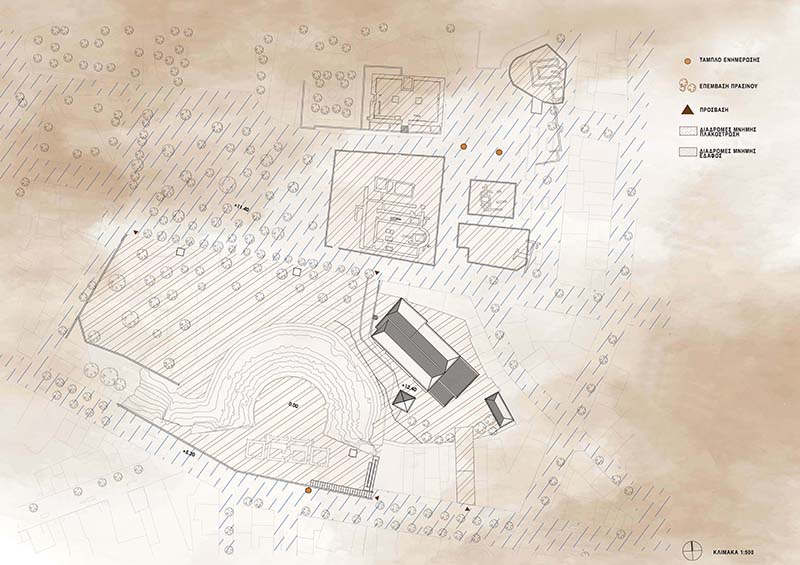

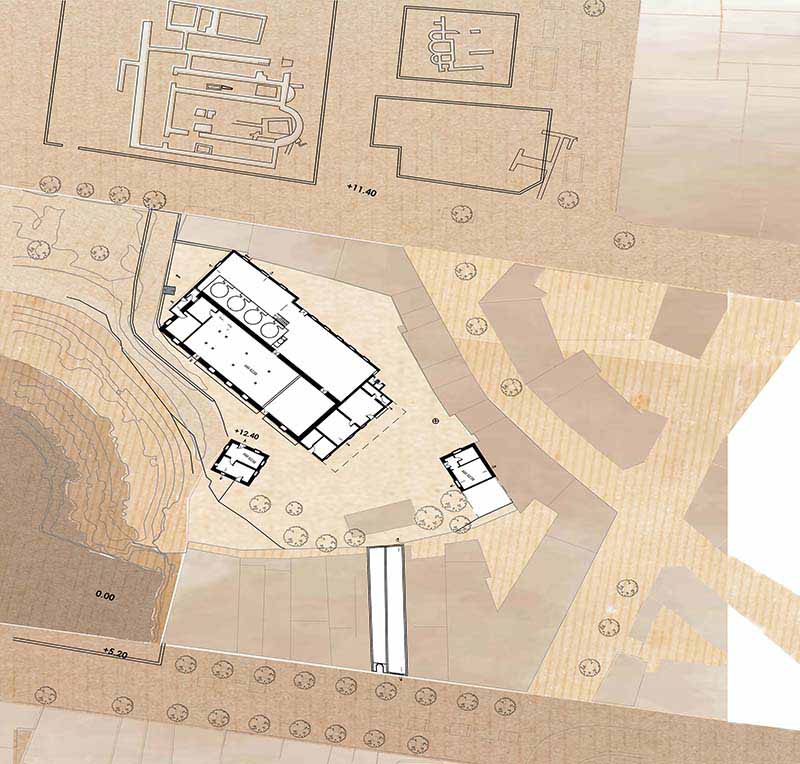

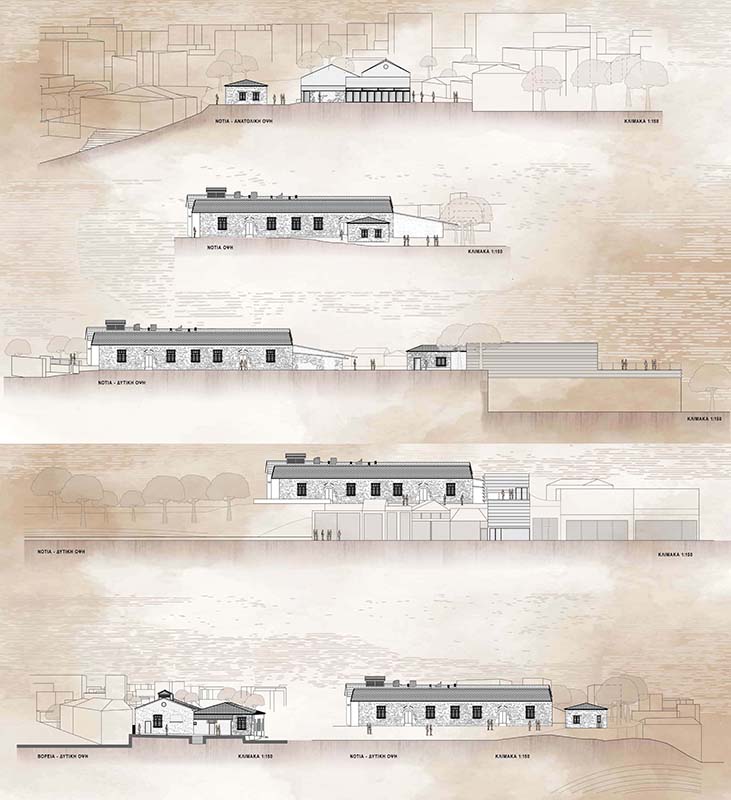

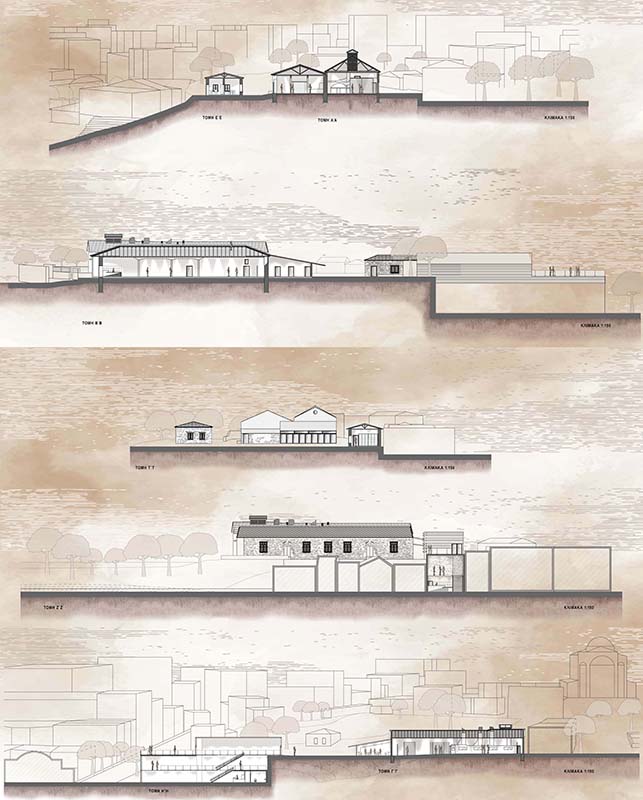

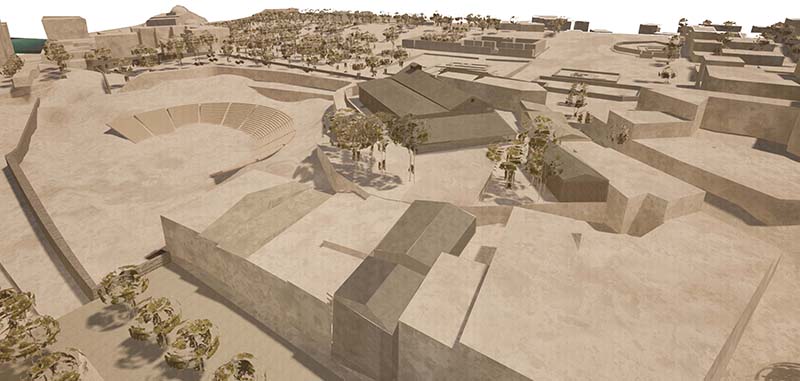

This paper examines a variety of planning strategies, focusing on the area of the First Ancient Theatre of Larissa, with the aim of redefining the relationship of society with the city and the archaeological site of the monument, as well as the promotion of urban memory. More specifically, the paper proposes the reuse of the Former Military Bakeries, located in the archaeological site of the 1st Ancient Theatre of Larissa, as well as a former clothing store on Venizelos Street. The aim of the design proposal is to link the flow of the new functions of the building complex to the preservation of the multiple layers of urban memory, as well as to meet the needs observed in the city of Larissa.
The paper then examines the importance of the accessibility of the archaeological sites through alternative design principles in order to highlight and strengthen the city's dipole with the archaeological site of the Ancient Theatre.
The design was based on the systematic collection and processing of information from different sources such as primary archival material, architectural competitions, as well as photographic material related to the intervention area. The methodological objective was further to extend and enrich the analysis by processing material from field observation and recording in the study area. Through visits to the archaeological site and the adjacent urban area, an attempt was made to provide detailed historical documentation of the construction phases of the former military bakeries and the shop, to analyze their pathology, their imprint and relevant documentation, and to evaluate the existing relationship between the archaeological site and the city of Larissa.
This paper aims, through the reuse of the building complex and the design of the access to the archaeological site of the Ancient Theatre, to investigate the importance of design in preserving the multiple layers of memory of society and Larissa, as well as the ways in which design can shape the access and perception of the contemporary urban landscape.
Keywords: Adaptive Reuse, Memory, Access, Connection, Museum, First Ancient.
Supervisor: Phokaides Petros
Reference Number: 1068
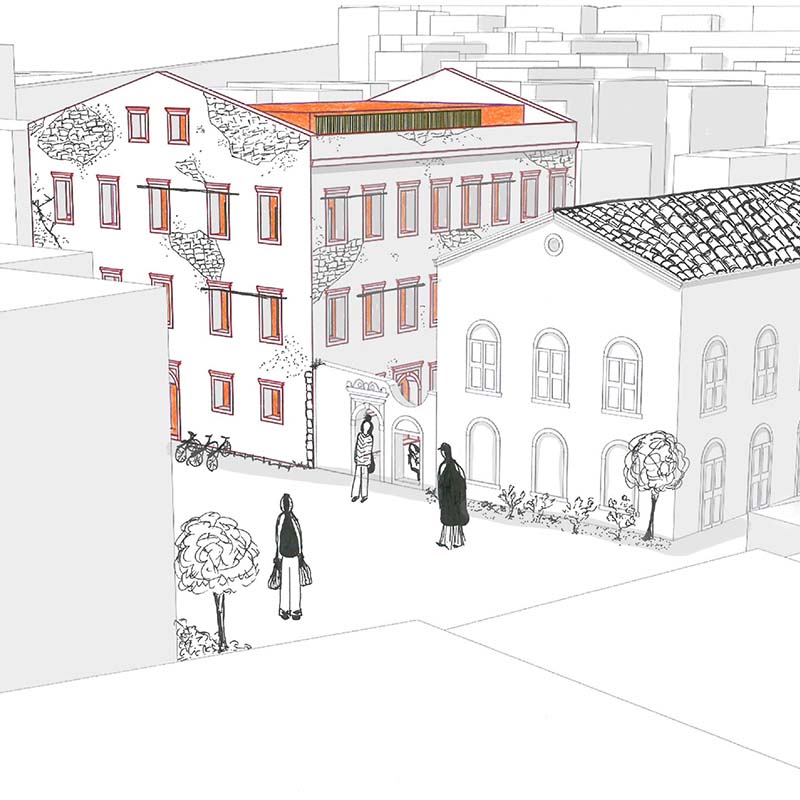











This thesis concerns the restoration and reuse of abandoned buildings in the old town of Corfu in order to house the Music Studies and Audio & Visual Arts departments of the Ionian University. Specifically, these two departments are housed in buildings that no longer meet their new needs, as due to their evolution and progress, the spaces are no longer sufficient. At the same time, these two departments which deal with the arts at an academic level are far from each other and thus it becomes difficult to collaborate and experiment with each other with a more interdisciplinary approach.
At the same time, in addition to the various spaces that are necessary, such as for example performance rooms, recording rooms, etc., an equally important problem is the difficulty of students accomodation due to the extremely expensive rent and the proliferation of short-term rental apartments in the old city and not only. So, the aim of the thesis is the utilization of five abandoned buildings which are located nearby, in order to create new spaces for the above departments and student residences that they will be managed by the university itself.
Thus, these buildings will accommodate either students or, in a more general context, people related to the university, while at the same time activities will be carried out within the departments and free experimentation between students within or outside the academic boundaries. Finally, as a result of the proposal, a new type of neighborhood emerges in which a separate soundscape is created.
Supervisor: Paniyiris Costis
Reference Number: 1071

